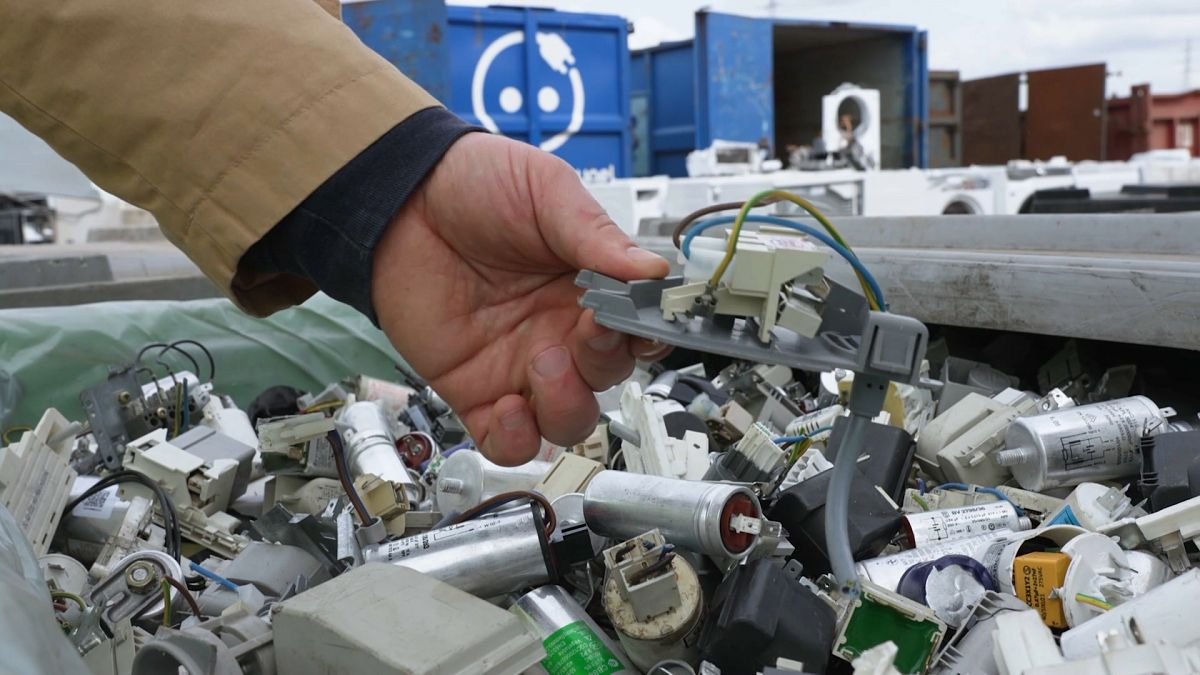Published on
The old smartphone hiding in your drawer probably holds tiny portions of lithium, cobalt, and rare-earth metals. It is estimated that 700 million old phones are lying around in Europe.
The concept known as “urban mining” involves finding materials in existing products, as opposed to “primary” mining where ground resources are exploited.
The EU has made it a priority to secure supply chains for the raw materials that are essential for green and digital technologies. Dozens of them have been classified as “critical” and “strategic” by the European Commission. However, 90% of these elements are currently imported from abroad.
According to EU data, around 1% of the valuable materials consumed in the EU come from recycling. The Critical Raw Materials Act, adopted in 2024, has set a target of reaching 25% by 2030.
E-trash is cash
The Commission’s objectives is to boost the recycling of electric waste, one of the fastest-growing waste streams.
In each member state, organisations are responsible for collecting and transporting e-waste to the continent’s 2,700 processing facilities. The recycling facilities are expected to meet a growing share of the demand from European foundries, which traditionally source their supplies from other continents, such as Asia.
Several challenges persist: from the profitability of extracting the smallest parts of materials, to “electronic hibernation”: According to a study, each European family has on average 74 electronic devices, 13 of which are unused but hoarded for various reasons, data privacy concerns being one of them.
Fancy living in a circular building?
The EU Commission is due to present a new Circular Economy Act in 2026 to foster the competitiveness of circular models in various sectors such as construction and demolition. This accounts for 40% of the total waste weight in the EU, mainly traditional raw materials such as concrete, aluminum, steel, and glass, which, again, are often imported.
While much of the demolished concrete is considered recycled, it is actually crushed for use as an aggregate base, for example in road construction. More and more technologies are enabling recycling rather than downcycling. Emerging techniques are transforming old blocks into high-quality concrete.
Furthermore, many leftover materials such as plastics and wood are often not recovered and are sent to incineration or landfill. New sorting techniques are helping to increase the recycling rate.
Reuse or transform for minimal impact
Another trend is the reuse of materials. Elements such as concrete blocks, windows, and bricks can be dismantled for reuse. A more modular design of buildings can also allow for greater circularity.
Some countries have already adopted an approach aimed at requiring inventories of the materials present in buildings before any demolition.
Like the reuse and repair of electronics, building renovation remains a better solution than demolition in terms of environmental impact, according to experts.
According to the European Environment Agency (EEA), 20-25% of the life cycle emissions of the current EU building stock are embedded in building materials. Circular economy-based approaches to renovation can help reduce embedded greenhouse gas emissions.





